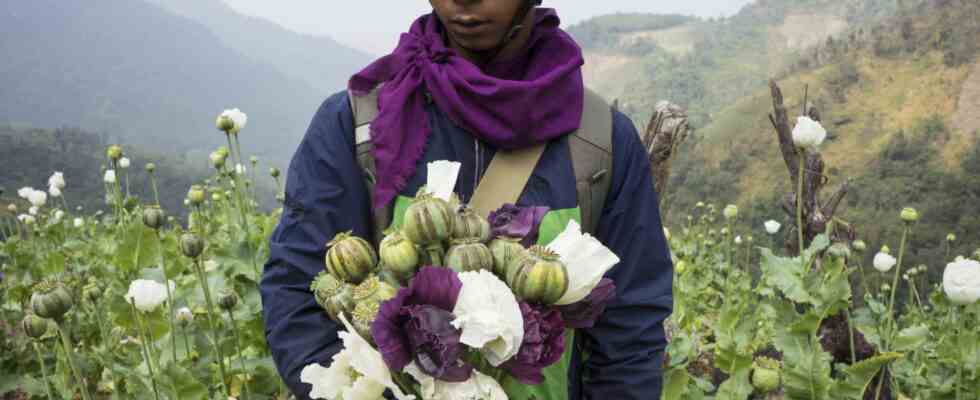Status: 01/26/2023 1:57 p.m
In hardly any other region of the world are so many drugs produced and traded as in the border area between Myanmar, Thailand and Laos. However, after years of declining cultivation in Myanmar, it rose sharply again for the first time in 2022.
Since the military coup in Myanmar almost two years ago, opium cultivation has increased significantly again. After a year-long downward trend in the Southeast Asian country, opium poppy planting rose after a United Nations estimate 33 percent again for the first time in 2022.
According to the report, the area under ovine poppies increased by around 10,000 hectares to an estimated 40,100 hectares during the period. By far the highest cultivation density was found in Shan State, a region in the north-east of the country, said the UN Office on Drugs and Crime.
The national production potential in 2022 has been estimated at about 790 tons, it said. While that estimate is still below the recent peak of 870 tons in 2013, it is almost double the 2020 estimate of around 400 tons.
UN expert: Some farmers ‘little choice’
The new boom is “directly related” to the political and economic chaos that Myanmar has slipped into since the military junta took power on February 1, 2021, the Thai newspaper “Bangkok Post” quoted Jeremy Douglas of the UNODC, the UN office for drugs and crime. “Farmers in remote, often conflict-prone areas had little choice but to go back to opium.”
According to the report, persistent political instability, weak economic conditions combined with inflation and very high selling prices for opium have led many to return to planting opium poppies. The average selling price of freshly harvested opium has increased by almost 70 percent to $281 a kilo in 2021, from $166 a kilo in 2021.
In addition, the authority found that the global rise in prices due to the war in Ukraine had also favored the increase. “Without alternatives and economic stability, opium cultivation and production is likely to continue to increase,” warned UNODC country officer for Myanmar Benedikt Hofmann.
Drug stronghold “Golden Triangle”
Opium is extracted from opium poppies and heroin is manufactured. The border area between Myanmar, northern Thailand and Laos – the so-called Golden Triangle – is one of the regions in the world where most drugs are manufactured and traded. In recent years, however, drug dealers there have focused more on methamphetamines.
The states of Shan, Chin, Karenni and Kachin examined in the UN report are mainly populated by ethnic minorities. In some cases, they have been the scene of armed conflicts between local rebels and changing central governments for decades. Myanmar (formerly Burma) had been under the direct rule of military dictators for almost 50 years until the spring of 2011. On February 1, 2021, the army staged a coup against the civilian government of Nobel Peace Prize winner Aung San Suu Kyi.

